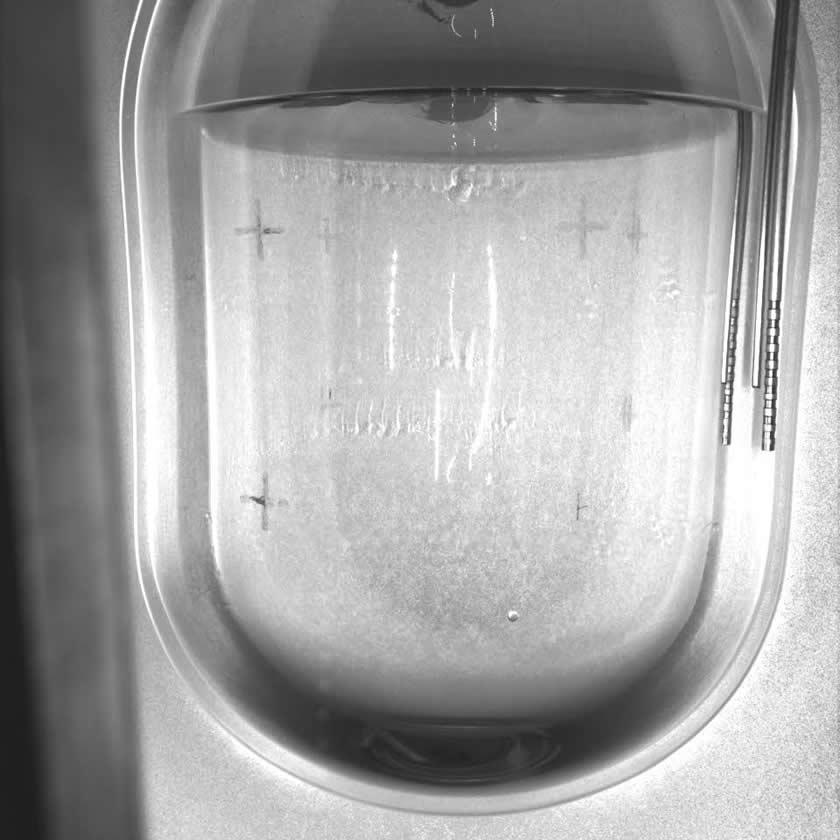
The bubble near the bottom of the 2L PICO bubble chamber features prominently in the first results published by the PICO collaboration. Photo: PICO.
Carsten Krauss is getting big results with a small particle detector. Krauss, director of the Centre for Particle Physics at the University of Alberta, is a member of the PICO experiment, which uses a two-litre bubble chamber to detect dark matter.
The search for dark matter is an ongoing problem in particle physics. More than 80% of the mass of the universe is thought to be composed of dark matter. However, direct evidence of its existence has yet to be observed. PICO is poised to detect possible interactions of Weakly Interacting Massive Particles (WIMPs), the leading candidate for what makes up dark matter.
Situated two kilometres underground in the Sudbury Neutrino Observatory (SNOLAB), the PICO chamber contains C3F8 (also known as octafluoropropane), a refrigeration liquid that has been repurposed in PICO for studying particle interactions.
PICO's first results were published last month. "We have not discovered dark matter, but we have extended the sensitivity, and thereby learned that dark matter is either lighter than we can see or interacts weaker than what we are sensitive to."
PICO was designed to test the suitability of C3F8 for use in bubble chambers, though researchers soon realized that the small-scale detector was already very sensitive to particle interactions in the low mass range where WIMPs may be detected. Indeed, it was sensitive enough that Krauss's team used it to set new limits on how reactive dark matter can be while crossing the detector.
"The surprising thing to note about this result is that we found that the C3F8 is working really well, and with only about half a year of data, we were able to significantly increase the sensitivity for dark matter (that carries spin)."
PICO is a somewhat traditional bubble chamber detector. However, it employs both cameras and microphones to collect data on the particle interactions. "We are using an effect that we discovered a few years ago that lets us distinguish particles by their sound. The sound is coming from the very first expansion of the bubbles (the first nanoseconds), according to our current understanding."
A particle travelling through the C3F8 will deposit energy in the chamber, creating a bubble. A higher energy particle will travel further, creating several "proto-bubbles" which give off acoustic signals. A lower energy interaction won't travel as far, so its acoustic signal will be weaker. In this way the different particle interactions may be distinguished by sound, as well as through the images captured by the high resolution cameras.
The first iteration of PICO ran in 2013 and 2014, and the new detector just recently started operating. It was rebuilt with an improved quartz vessel, and will be running under new cleaning procedures that will extend its sensitivity. Krauss's group analyzes the optical data from the bubble chamber, which has already produced its first images.